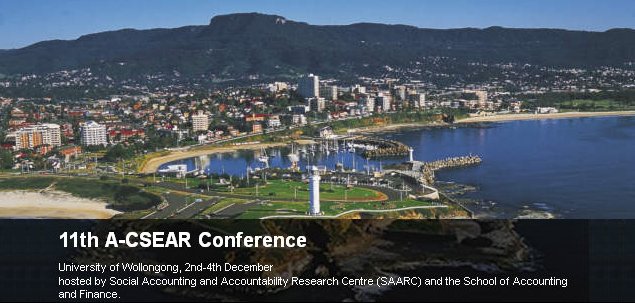Location
Bld 67.102
Start Date
3-12-2012 2:00 PM
End Date
3-12-2012 2:30 PM
Description
Purpose: The purpose of this paper to explore the grand narrative of two industrial asbestos giants James Hardie Industries Ltd (James Hardie) and Turner & Newall (UK) through annual reports longitudinally. Corporate disclosures play an important role in circumscribing and mediating the corporate social footprint. Accounting as regime of representation presents particular social phenomena at a point in time and this study provides both a comparative (spatial) and longitudinal (temporal) dimension of narrative disclosures around asbestos. Design/Methodology/Approach: This paper draws on narrative disclosures as the segue to financial reporting. Annual reports are prefaced by a considerable discourse consisting of narrative, pictorial and graphical representations. These narrative disclosures serve to frame the accounting information and this study interrogates these disclosures for two companies involved in the manufacture of asbestos products through a period of industrial expansion and decline. Findings: The study challenges the ascription of accounting notions of value and other typical accounting representations as disclosed in narrative reporting. The corporate tale traverses periods of asbestos as profit and success through to the liability and considerable corporate risk. This discursive shift was demonstrated by the re-narration of the corporate story; effectively erasing the grand narrative of asbestos in its transformation from ‘magic mineral’ to ‘killer dust’.
The Rise and Fall of Asbestos: A tale of two companies
Bld 67.102
Purpose: The purpose of this paper to explore the grand narrative of two industrial asbestos giants James Hardie Industries Ltd (James Hardie) and Turner & Newall (UK) through annual reports longitudinally. Corporate disclosures play an important role in circumscribing and mediating the corporate social footprint. Accounting as regime of representation presents particular social phenomena at a point in time and this study provides both a comparative (spatial) and longitudinal (temporal) dimension of narrative disclosures around asbestos. Design/Methodology/Approach: This paper draws on narrative disclosures as the segue to financial reporting. Annual reports are prefaced by a considerable discourse consisting of narrative, pictorial and graphical representations. These narrative disclosures serve to frame the accounting information and this study interrogates these disclosures for two companies involved in the manufacture of asbestos products through a period of industrial expansion and decline. Findings: The study challenges the ascription of accounting notions of value and other typical accounting representations as disclosed in narrative reporting. The corporate tale traverses periods of asbestos as profit and success through to the liability and considerable corporate risk. This discursive shift was demonstrated by the re-narration of the corporate story; effectively erasing the grand narrative of asbestos in its transformation from ‘magic mineral’ to ‘killer dust’.


